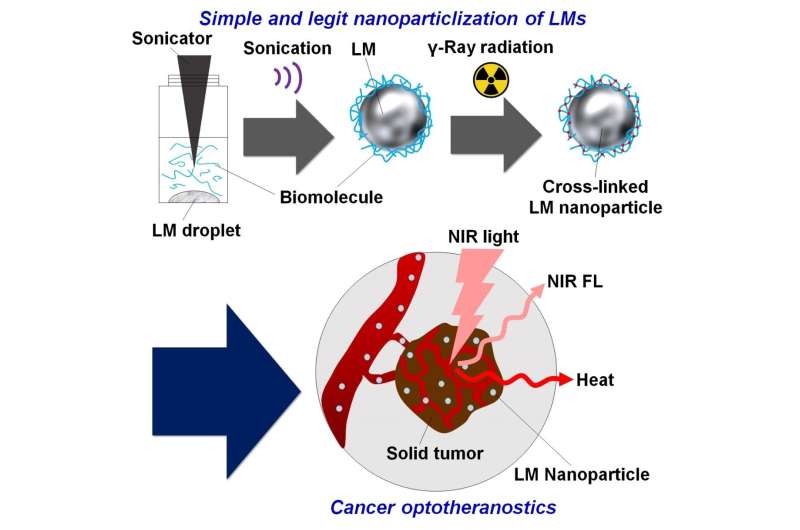Figure 1. Schematic illustration of cancer optotheranostics using functional liquid metal nanoparticles. LM: liquid metal, NIR: near-infrared, FL: fluorescence. Credit: Japan Advanced Institute of Science and Technology
Due to their unique characteristics, gallium-based liquid metal (LM) nanoparticles have been applied in various research fields. LM nanoparticle surface-modification design is essential for enhancing the original LM properties and physicochemical multifunctionalization.
Besides, standard cancer treatments are currently limited to surgery, radiation, and chemotherapy. Unfortunately, all three methods risk damage to normal tissues or incomplete eradication of the cancer. Development of LM-based nanomedicinal technology is challenging area for exploring new and innovative applications in the advanced cancer treatments.
Scientists at Japan Advanced Institute of Science and Technology (JAIST) and National Institutes for Quantum Science and Technology (QST) have created a cancer optotheranostics using functional eutectic gallium-indium (EGaIn)-based LM nanoparticles that were successfully synthesized by various biomolecules (gelatin, DNA, lecithin, and bovine serum albumin), sonication, and quantum beam (γ-ray) radiation (Figure 1).
Developed by Associate Professor Eijiro Miyako and his team from JAIST, a sonication- and γ-ray-mediated nanoparticlization method using various biomolecules and EGaIn can be effectively worked as a platform for cancer optotheranostics. In fact, the synthesized biomolecule-functionalized LM nanoparticles exhibited unique structural and excellent physicochemical traits for NIR bioimaging systems to identify tumor location in mice. Additionally, they succeeded the spatiotemporal photothermal activation of LM nanoparticles for elimination of colon tumors. The team believes that the research provided a new design and functionalization of LM nanoparticles and opened new opportunities to advance optotheranostics in cancer treatment.
More information: Qi Yun et al, Sonication - and γ-ray-mediated biomolecule-liquid metal nanoparticlization in cancer optotheranostics, Applied Materials Today (2021). DOI: 10.1016/j.apmt.2021.101302
Provided by Japan Advanced Institute of Science and Technology
























